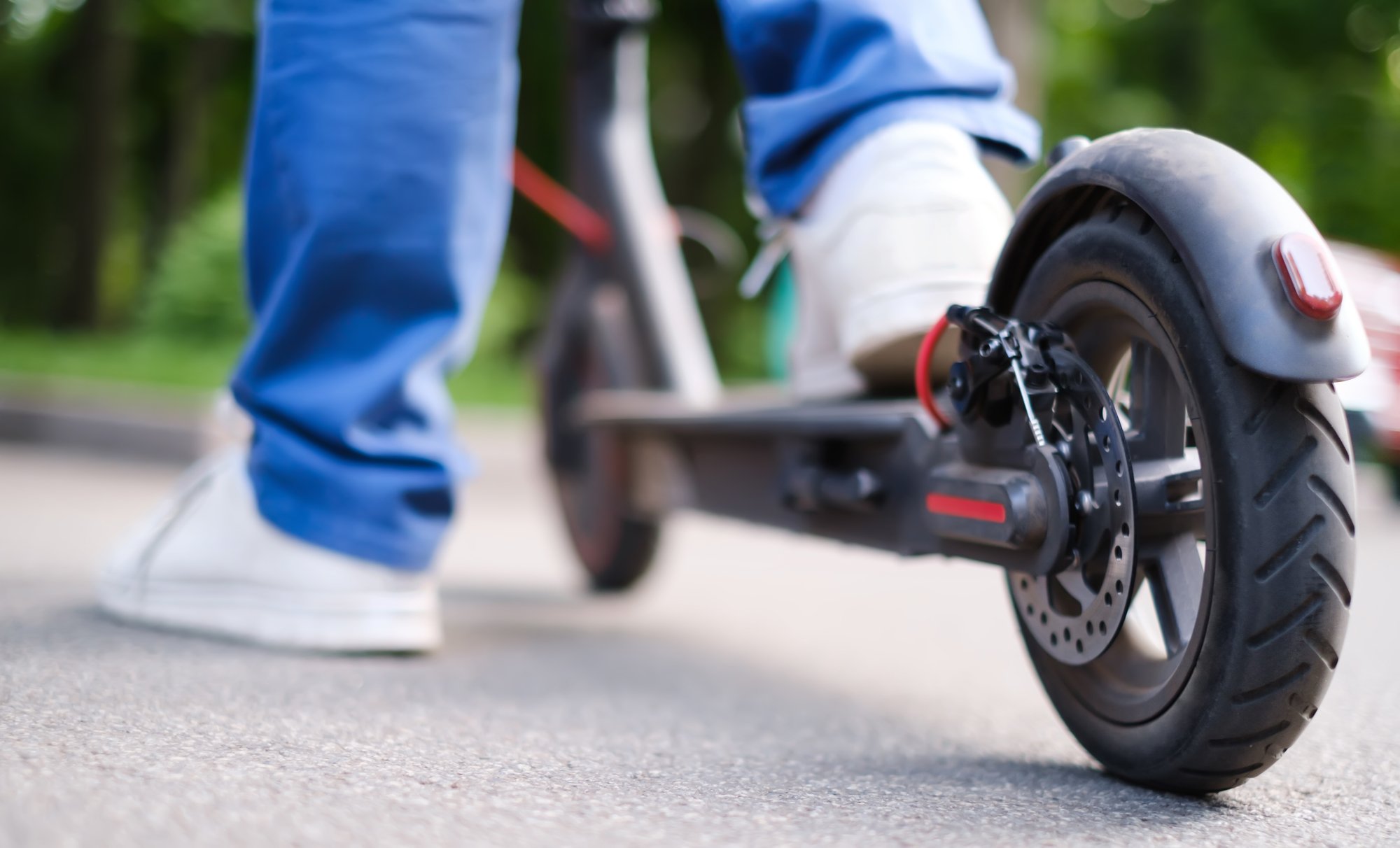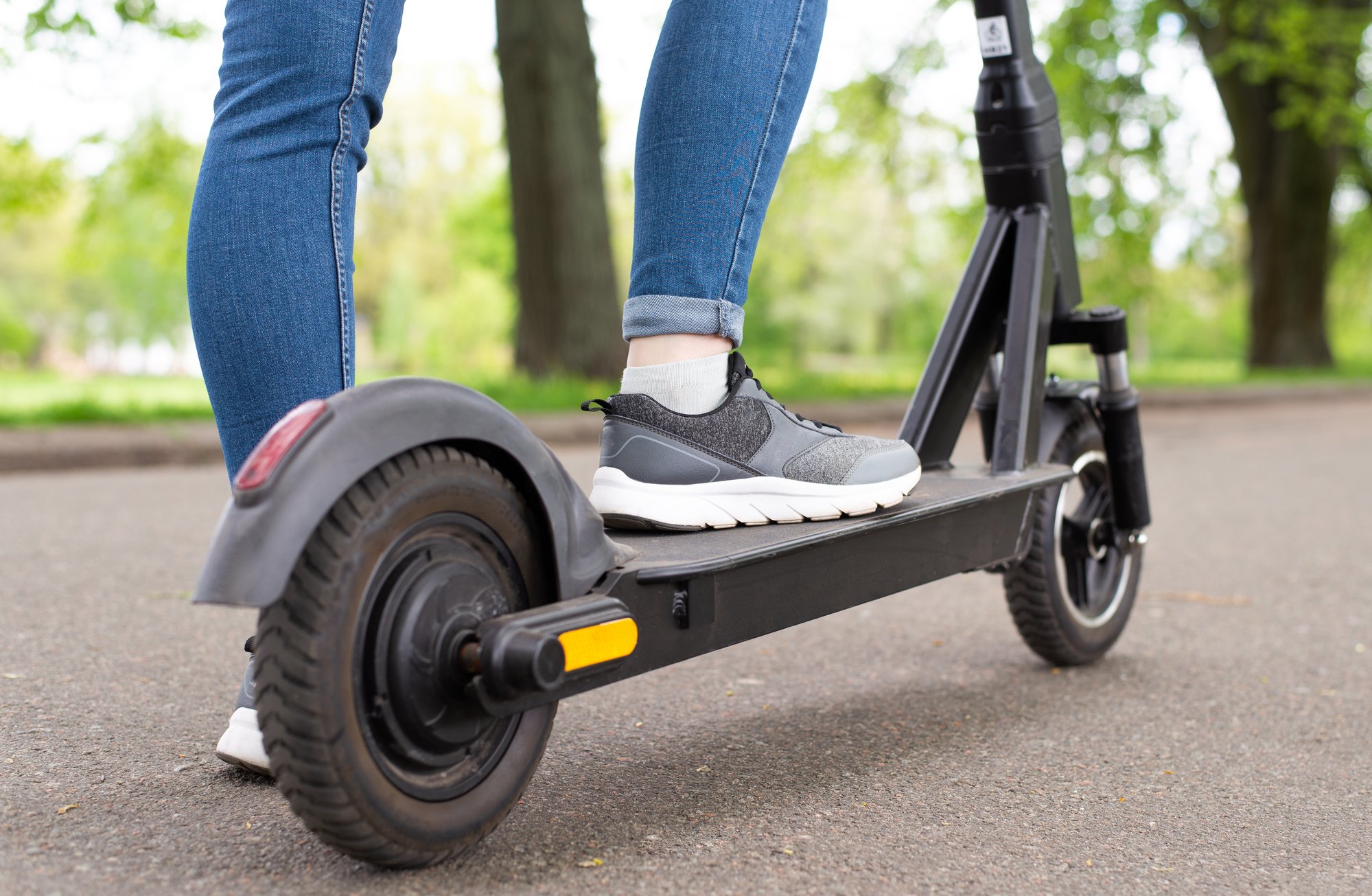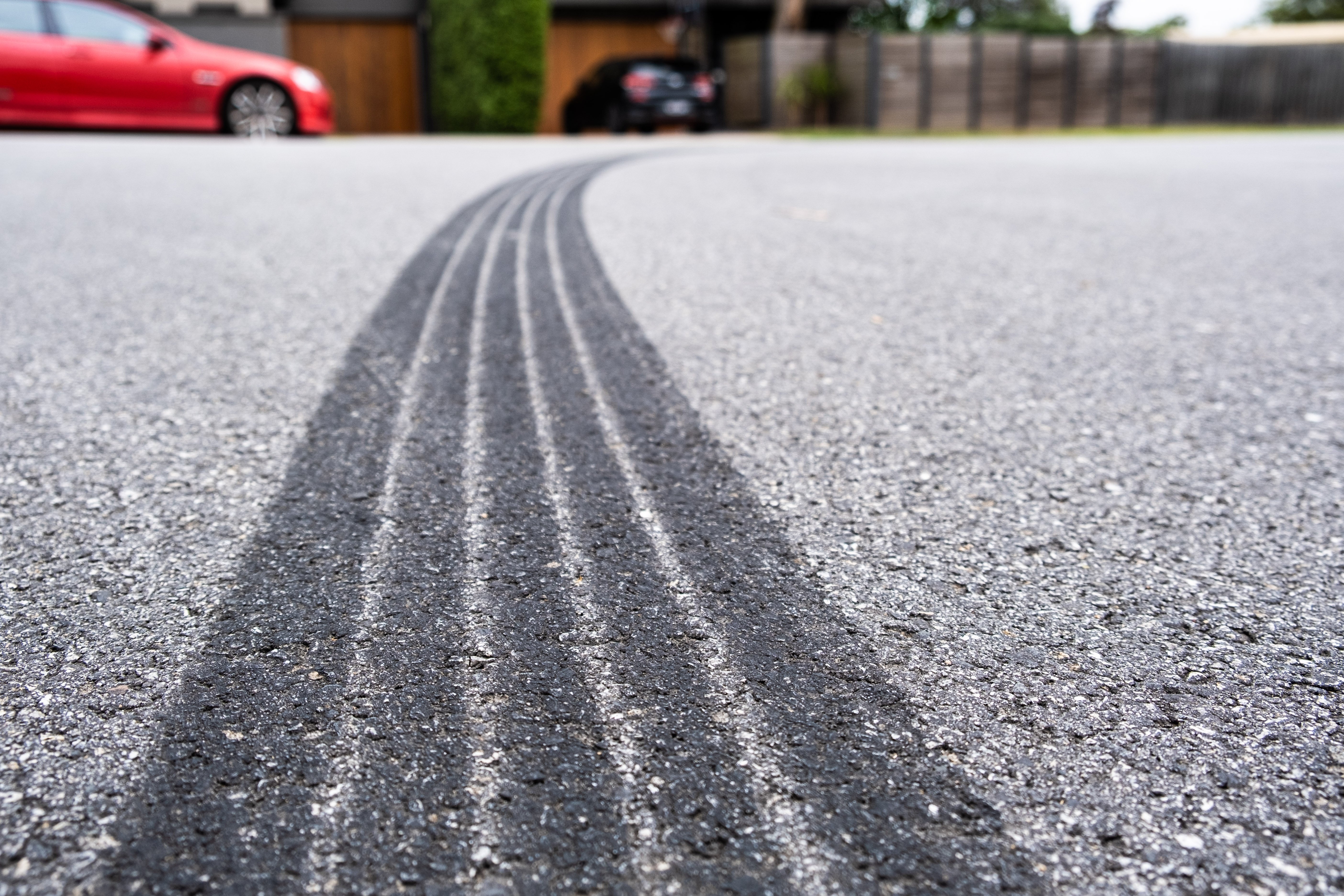Micromobility is here to stay, and it’s changing how we experience urban life for the better. With Unagi’s membership program, you can enjoy all the benefits of a top-tier electric scooter without the sky-high price of ownership or the inconvenience of ride-sharing.
When you’re looking to purchase an electric scooter, the brakes on your vehicle will no doubt be one of the most important considerations for you to undertake.
Brakes are what keep you safe while riding your electric scooter around town or commuting to work, so it’s essential that they work properly in any situation. It's no good having a state-of-the-art braking system if you don't know how to use it and it fails in your moment of need.
Electric scooters can come with many different types of brakes, though the three most common choices are disc brakes, drum brakes, and foot brakes. Each has its own pros and cons when it comes to braking performance, so it's best to familiarize yourself with all of the different braking systems if you're still yet to make a purchase.
Some of the things you'll want to look out for when electric scooter shopping are the type of brakes each model has, as well as the braking distance (how long it takes to come to a complete halt). This is because the same system might be less effective on different models, for example, a top-quality drum brake might stop a lot faster than one with cheap brake pads.
In this article, we take a look at the different types of electric scooter brakes that are available today, their pros and cons, and any other points of interest worth knowing for each braking system.
The different types of electric scooter brakes
There are five real contenders when it comes to braking systems, which can be split into two distinct categories; mechanical brakes and electronic brakes.
You should read reviews to find out the quality of the braking system that is on the electric scooter you are considering buying, because they aren't all as effective, even if they're similar.
Different brake systems also come with varying levels of maintenance required to keep them working well, which can be a deciding factor between different electric scooter brake types.
Mechanical systems

The mechanical brake category is larger and hosts the three most common types of brake that you are likely to find on an electric scooter. This category consists of disc brakes, drum brakes and foot brakes, which all require force or mechanical input to utilize.
Disc brakes and drum brakes are usually triggered by the rider pulling on a brake lever on their electric scooter handlebar system, which in turn pulls on the brake cable, which causes the drums (or brake pads) to touch the wheel. As the wheel spins with the brake pads touching it, the friction causes it to spin at a slower speed, bringing the electric scooter to a stop.
Foot brakes are the third type of mechanical brakes, but they are not activated by the rider's fingers. Foot brakes are essentially a cover on the electric scooter's wheel (almost always the rear wheel), which the rider steps down on to cause the scooter wheel to succumb to pressure and slow to a stop.
Typically, foot brakes are the least effective braking system and they can also cause a scooter to skid in wet conditions. Usually, foot brakes are a secondary backup option for electric scooters, usually used in tandem with other brakes or for gentle deceleration rather than stopping rapidly.
The history of brakes for two-wheeled vehicles
Brakes on a two-wheeled vehicle were first invented in 1879, when the first bicycles with brakes were built. The first bicycle brakes were actually made with flat pieces of wood or metal that were pressed against the rims of the wheels to slow down the bicycle.
Today, instead of wood or metal, you'll most likely find a rubber brake caliper on your bike or scooter, because they are much less damaging to the rim of the wheel.
The first bicycles were also quite heavy and hard to control, due to the materials they were made from and how much effort was required by their riders, so they could have probably really used some more efficient braking systems.
In 1894, the first motorcycles were invented and they had brakes. The first motorcycles had brakes similar to bicycles, and they were also made with wood and metal, and their brakes were also made from metal, which quickly wore down the wheels and required maintenance.
The electric scooter really came onto the scene in the last 15-20 years, and by that time modern bicycle brakes were already pretty efficient with good stopping power. The same technology has been applied to electric scooters, and it keeps on improving, which is how we've now come to see a new category of braking systems.
Electronic systems
This category of electronic braking systems for electric scooters includes two different varieties or possibilities that you might come across.
As a general rule of thumb, electronic brakes require zero maintenance in comparison to their mechanical counterparts. This is because they do not rely on components or need to create friction to work, so the rider never needs to worry about the condition of the braking surface, or getting new brake pads.
They also weigh less than more conventional brakes, because they work by taking something away from the motor rather than using force to make it come to a stop.
Drum brakes

Drum brakes are the most common type of brake on electric scooters. They have a brake shoe, which is usually made from steel, aluminum or stainless steel and the entire brake system is usually encased over the front or rear wheel.
Drum brakes work by having an inner drum that rotates with a wheel mounted outside it. With a drum brake, when you squeeze the brake lever, it pushes a rod that forces the inner drum against the outer drum. The friction created causes heat, which stops your scooter.
Advantages of drum brakes
The main advantages of drum brakes are that they’re simple, reliable, cheap to produce, and produce a great amount of braking power. They also don’t use much energy to operate, so you can get a lot of stopping power from just a small amount of effort. They are very responsive, even in wet conditions, if the drum brake is enclosed from external conditions.
Disadvantages of drum brakes
The disadvantages of drum brakes are that they wear out quickly if used too much or for long periods at high speed. Drum brakes overheat, and so they wear down, which means that they require frequent maintenance to uphold the same amount of braking power. This sensitive nature means that in the long run, they can be more expensive than other braking systems.
Disc brakes
Electric scooter disc brakes work by engaging a small metal disc that’s attached to the wheel, which in turn presses against the brake pads. The pads then push on the rotor (which is rotating to move the wheel) which then slows down your electric scooter.
Many people prefer disc brakes over alternatives like drum brakes or electric brakes, because of their strong stopping power. Essentially, mechanical disc brakes are the most effective at bringing your scooter to a safe stop, and that is reflected in the price.
Hydraulic disc brakes are different to normal disc brakes in that they use fluid instead of air to operate. This makes them significantly more efficient and easier to maintain than their mechanical counterparts. However, they are also a lot more expensive and can be prone to leaking if not properly maintained.
Advantages of disc brakes
The main advantage of disc brakes is that they’re effective in both wet and dry conditions. Disc brakes are more responsive than drum brakes, which means they can be applied more quickly, and are more durable as well.
They also require less effort to slow down due to the fact that they don't have as much friction in the system as drum brakes do. As a result, you'll be able to stop faster and with greater precision when using disc brakes.
Disadvantages of disc brakes
The disadvantages of disc brakes are that they're more expensive, require more maintenance and are heavier than their drum counterparts. If you're looking for a scooter that's easy to store or move around, then it might be worth considering one with drum brakes instead.
The addition of disc brakes will no doubt be reflected in the price of your electric scooter, but that's the price you have to pay for the best stopping power on the market. Don't get too hung up on stopping stats though, because if you stop too quickly you risk skidding.
Foot brakes

Foot brakes are the simplest type of braking system, and are found on nearly all electric scooters, usually as a secondary option for peace of mind more than their stopping power.
How foot brakes work is by pushing down with your foot on a hinged fender that sits above the rear tire, creating friction on the wheel and bringing you to a slow stop.
Even though it seems like an easy feat to lift one foot off the deck and push it down on the fender, it can cause you to lose balance, so be careful when trying it for the first time. You always push on the rear tire which is why they are sometimes called a rear brake.
The advantages of foot brakes are that they don't add much weight to your electric scooter, they are very simple and don't break easily, and they require no maintenance besides maybe having to change the rear tire from heavy use.
The disadvantages of foot brakes are that they are the poorest-performing brake type, which gets even worse in wet conditions, making them quite unreliable. Also, moving your fingers to operate a brake is much more efficient than moving your whole foot, and doesn't require shifting your body.
Electronic brakes
Electric scooter brakes keep on evolving, and in the past few years they have taken another step up with the introduction of electronic brakes. This is a new technology that is activated by a switch that shorts the terminals within the motor, effectively increasing the resistance to the rotation of the motor.
Electronic brakes for electric scooters are different in how they work because a switch is used rather than a lever, so there is no need to apply pressure. Not many electric scooters have this type of brakes yet as they're a new technology, but they are gaining in popularity.
The advantages of an electronic brake are that it adds no weight to the electric scooter, and doesn't have any brake pads or brake calipers that will need replacing, so require zero maintenance throughout its lifetime.
The disadvantages of this braking system are that it doesn't afford as much stopping power as other options, but a well-implemented system will definitely make your electric scooter brake in more than enough time.
Regenerative brakes
Regenerative braking systems work in much the same way as the electronic braking option above, in that they rely on the kinetic energy of the motor on itself rather than friction from an outside source.
The main difference is that a regenerative brake will transfer the energy created back into the battery, regenerating the battery. However, this generally doesn't add much mileage at all, and until the technology improves it will probably be more of a gimmick to most experienced riders.
They are lighter than mechanical brakes because they don't have a metal disc or mounting bolts or anything like that, but regenerative brakes can be prone to failure, and won't charge the battery if it already holds a full charge.
They are low maintenance brakes, but if you're looking for more stopping power you'll want to opt for a mechanical electric scooter brake instead.
Which brakes does the Unagi Model One have?
The latest Unagi Model One comes equipped with the latest technology in electric scooter brakes, rather than mechanical brakes or regenerative brakes. It also comes equipped with a foot brake on the rear wheel, for added stopping power and extra peace of mind. This means you have brakes on both two wheels, with the front wheel hosting your primary brake.
The independent e-scooter reviewer Electric Scooter Guide said that the Unagi came to a halt in16.9 feet, which is on par with a top-of-the-range mechanical disc brake. The main benefit of electronic brakes though, is that they require no maintenance, even with a lifetime of use.
Electronic brakes work by activating a switch or lever which is usually found on the handlebars of electric scooters, which brings the motor to a stop. This causes a massive increase in physical resistance to the rotation of the motor, rapidly bringing the scooter to a controlled stop.
The addition of a manual foot brake on the rear wheel means that you can increase your stopping power when used in tandem with the electronic brakes on an Unagi, and also have peace of mind for the extremely unlikely event that motor power shuts off during your ride.
So which electric scooter brakes are the best brakes?

The answer to this question is quite subjective depending on what it is that you're looking for in your electric scooter braking system. Electric scooters work by creating power to move forward, which then needs power to stop quickly, usually by the application of a front brake.
If you go with mechanical, you have to choose between disc or drum. Drum brakes are less effective at bringing your vehicle to a stop than disc brakes because they don't dissipate heat as well or have as much surface area for contact with other surfaces as discs do.
Electric scooter disc brakes are the most effective in terms of having strong braking power, but are more expensive than drum brakes and require as much maintenance.
An electronic brake system adds no weight to the vehicle and does not need maintenance, making it the most reliable braking system for electric scooters on the market.
Unagi All-Access
If you're not sure if electronic brakes are the right choice for you, why not try out the latest Model One Unagi scooter with the All-Access plan. Starting from only $59 a month, you can try out a state-of-the-art electric scooter (and its brakes) with full insurance.

Stay current with the latest U.S. electric scooter laws in our 2025 guide. Updated annually since our first comprehensive guide, ensuring you have the most recent state and city regulations to ride responsibly”

The Slack Core 920R is currently the fastest electric scooter in 2025 that you can purchase without the need for pre-order.

Our selection of the best electric scooters 2025 spans the fastest e-scooters to the most portable ones, the ones designed for city riding and off-road, the best scooters for rain, budget electric scooters for students, and more powerful ones for skilled riders.

The Unagi Voyager is the best lightweight electric scooter for adults and teenagers. It is the ultraportable sequel to its predecessor, the Unagi Model One Classic.

If you're wondering whether an electric scooter with a seat is right for you, this is a detailed article that would suit your need.

Understand which personal electric vehicle is best, the choice between an electric bike or electric scooter might already be made for you by some critical factors, including portability and storage capacity.

In the U.S., most states don't require a license. For those that do, they usually just ask for a regular driver's license or a learner's permit.

Yes, you can bring an electric scooter on a plane, but it needs to have a lithium battery smaller than 100 watt-hours, which most don't.

Manufacturers advise against riding electric scooters in the rain. The main reasons are: water can fry the electronics, make the ride dangerous, and void your warranty.

The basis and the premise of my work is that we either operate out of love or we operate out of fear...Time is currency. The coolest thing about the scooters is that it's really quick, and it goes uphill. From there, traveling more efficiently and having a good time doing it--I think that's the most important thing.

Cynthia Leu has a full plate. A tech worker by day, Cynthia spends her off time balancing the parallel lives of a powerlifter, entrepreneur, mental health advocate, and more. Riding Unagi helps this USMC veteran cut down on everyday…

https://www.youtube.com/watch?v=7m2hVBE62LY Rasheed Muhammad is sick of Los Angeles traffic. In order to preserve his sanity, Rasheed has traded his everyday driving habit for the portable and beautiful Unagi Model One. It’s an essential accessory for navigating LA streets -- and…

Rich Lee, Co-Founder of San Francisco’s SPRO Coffee Lab, wants to share his love for coffee with the world. He depends on riding Unagi to avoid the hassle of navigating the parking crunch in the booming Mission Bay neighborhood.…















